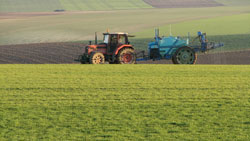Modelling dietary toxicity data for pesticides
The prediction of activity of biomolecules using databases and modelling is becoming an increasingly accepted tool. These are able to forecast toxicity levels for groups of chemicals such as pesticides. The use of quantitative structure-activity relationship (QSAR) models means that the preservation of our ecosystems need no longer be at variance with the economic interests of industry. QSARs may mean that more conventional time and money consuming biotoxicity tests will become largely obsolete. The objectives of the EC funded project DEMETRA involved the development of software for the prediction of chemical toxicity in four key organisms of our food chains. Groups involved included ecotoxicologists, representatives from industry and government bodies. To develop models involving the bobwhite quail for dietary toxicity, project partners at the Mario Negri Institute for Pharmacological Research in Italy compiled data on a set of 98 pesticides. The two main components involved in the study were a complete description of the compounds together with reliable and comprehensive toxicity data. The Organisation for Economic Co-operation and Development (OECD) drew up principles for QSAR model validation. One criterion was that the toxicity database used should have the maximum amount of data. The group therefore selected the Environmental Protection Agency Office Pesticide Program - EPA-OPP database for use in the QSAR model. Additionally, several other high quality sources of data were used for comparison as a means of ratifying the data for more accurate information. The scientists devised a method of allocating a single value for each compound from multiple data and imposed strict filtering to ensure a reliable outcome. For the compound description, the team provided three levels of information - chemical, which involves the molecular description, mathematical (the molecular descriptor) and a set of toxicity values for the compounds. Prospective users include owners of the databases utilised. This is an indication of the level of co-operation envisaged as together they can merge the data as an 'external audit' for validity checking. Others include regulatory bodies, industry, academic researchers and the public at large as the data is freely available on the DEMETRA website on http://www.demetra-tox.net(opens in new window). It is envisaged that this work will provide the basis for the development of new QSAR approaches.







